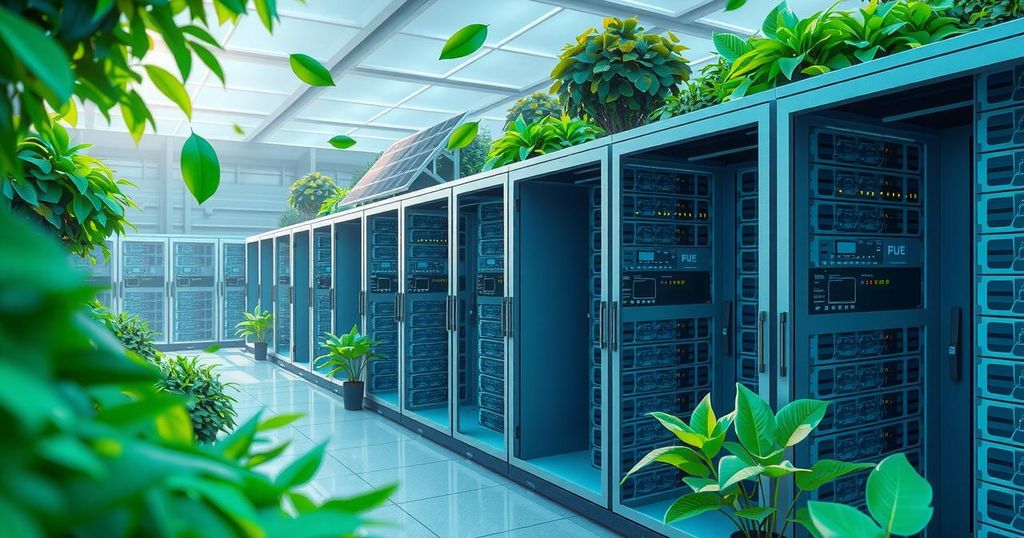AI
AFRICA, AMAZON, ARTIFICIAL INTELLIGENCE, BURKINA FASO, DATA CENTERS, DEPARTMENT OF COMPUTER SCIENCE AND ENGINEERING, GOOGLE, INNOVATION, KAN, KANDEMIR, MA, MAHMUT KANDEMIR, MARKET RESEARCH, MICROSOFT, NORTH AMERICA, PA, SCIENCE_TECHNOLOGY, SUSTAINABILITY, U. S, UNITED STATES, UNIVERSITY PARK
Nina Oliviera
0 Comments
AI’s Growing Impact on Sustainability Concerns: Insights from Penn State Expert
AI’s growth is becoming intertwined with sustainability challenges, as its energy consumption and environmental ramifications escalate. Mahmut Kandemir from Penn State highlights the urgent need for optimization in AI models, greener infrastructures, and cross-disciplinary collaborations. Understanding and addressing these challenges is vital for the balanced advancement of technology while protecting our environment.
UNIVERSITY PARK, Pa. — Artificial intelligence (AI) has seeped into our daily routines, from the voice on our smart speakers to the suggestions we see while shopping online. Yet, alongside these advancements lurks a rising environmental shadow. In the U.S., data centers were responsible for about 4% of electricity usage in 2023, a figure that experts predict could surge to 12% by 2028. Mahmut Kandemir, a prominent professor at Penn State’s Department of Computer Science and Engineering, raises the alarm about the increasing water consumption, emissions, and e-waste linked to AI’s rapid growth.
Kandemir, who has long been focused on making computer systems faster and more efficient, sees a timely connection between his work and its environmental consequences. He notes that making AI sustainable necessitates urgent action, advocating for better-designed AI models, greener data center infrastructures, and greater collaboration across fields. He argues that a joint effort among tech players, researchers, and policymakers could ensure that AI evolves without exacerbating its ecological footprint.
In an interview, Kandemir addressed the pressing issue of AI’s energy demands. He explained how initial energy concerns in computing revolved around user experiences, like extending mobile battery lives. Now, the discourse has shifted more towards environmental sustainability and reducing carbon emissions tied to AI. Large language models, for example, run on extensive computational power, leading to increasingly sky-high electricity consumption. By 2030-35, data centers might account for up to 20% of global electricity use, placing a significant burden on electrical grids.
Kandemir elaborated on why training AI models is such a taxing process. It’s about fine-tuning billions of parameters through high-intensity calculations that require substantial processing capabilities. The infrastructure demands for this include powerful computers with thousands of GPUs and TPUs—all running at the same time. This grueling training process can extend for weeks or even months, eating up energy by the bucketload. Only a few tech giants, like Google and Microsoft, can shoulder the immense costs of this operation. For smaller organizations, the lack of resources means extended training periods, which translates indirectly to even greater energy usage.
The repercussions of AI on the environment extend beyond just high electricity consumption, Kandemir warns. He noted the critical role of fossil-fuel-powered electricity in AI operations, thus contributing significantly to greenhouse gas emissions. AI data centers also demand advanced cooling mechanisms that lead to excessive water usage, a potential threat in drier regions. Plus, the rapid obsolescence of computing hardware contributes to a disturbing electronic waste problem. Producing these components further strains our environment through mining phases that chip away at our natural resources. The sheer volume of data required for training models adds yet another layer of energy burden.
Turning to potential sustainability options, Kandemir mapped out several strategies. Aiming for energy efficiency is crucial, which might mean optimizing AI models to run on less power without sacrificing performance. Perhaps focusing on developing specialized AI models tailored to certain fields could lower resource use significantly—a shift away from trying to build one-size-fits-all models.
Innovative hardware can also help, he points out, with alternatives to traditional GPUs, like neuromorphic chips that promise better energy efficiency. The transition to renewable energy sources for these data centers is pivotal but doesn’t come without its challenges regarding energy storage. A fresh idea floating around is the idea of distributing computing processes globally to match up with periods of peak renewable energy, thus leaning into natural resource availability. These strategies might help tame AI’s environmental impact while still pushing the tech envelope.
Kandemir was vocal about the pivotal role that research institutions can play in promoting sustainable AI practices. Universities can spearhead carbon footprint evaluations of AI operations to clarify the tech’s energy impact better. They have an opportunity to integrate sustainable practices into research plans and influence industry policies toward greener results. Securing funds from entities like the National Science Foundation and the Department of Energy can boost this crucial work.
These institutions need to encourage teamwork between computer scientists, environmental experts, and policy makers, bringing forth solutions that are mindful of the planet. Moreover, universities can launch educational programs and public talks that spotlight AI sustainability, fostering awareness and energy-efficient practices in the research community. By stepping up actively, research institutions can pave the way for a more sustainable AI future.
In summary, the growth of artificial intelligence undoubtedly brings exciting innovations, but it also raises significant environmental challenges. By focusing on energy efficiency, optimizing models, and moving toward renewable energy sources, the tech industry can work towards a more sustainable future. The collaborative effort from universities and researchers significantly enhances the capability to mitigate the ecological impact of AI. Guarding our planet while pushing technological boundaries might just be the tightrope we need to walk in coming years.
Original Source: www.psu.edu




Post Comment